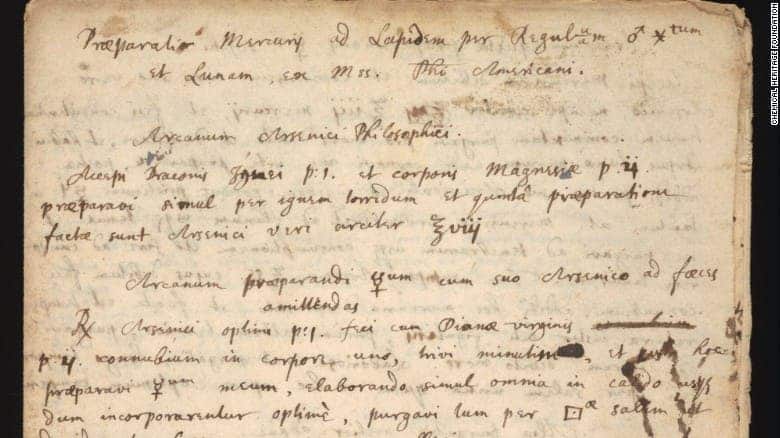For many, alchemy conjures the image of a medieval bearded wizard toiling through the night among alembics and crucibles in search for the Philosopher’s Stone and Elixir of Life. One can transmute any metal into gold while the other grants eternal life. Those are pretty strong motivations, but nowadays it’s easy to dismiss alchemists as delirious and crackpots. The truth is that alchemy attracted men of culture and attainment from every race and clime over a period of thousands of years, long before “chemistry” was a thing. For instance, one of the greatest scientists in history, Isaac Newton, was notoriously into alchemy. The great physicist who invented Calculus in his 20s and gave the world the universal law of gravity transcribed countless pages from a famous alchemy manuscript which describes how to manufacture a key element for the Philosopher’s Stone.

This manuscript has been gathering dust in a private collection for almost a hundred years but has recently re-surfaced after the Chemical Heritage Foundation bought it. The organization is currently digitizing each page and plans on releasing the whole text publicly once the process is done.
The text was handwritten by Newton in English and Latin from a manuscript of alchemist George Starkey.
“The significance of the manuscript is that it helps us understand Newton’s alchemical reading–especially of his favorite author — and gives us evidence of one more of his laboratory procedure,” explained James Voelkel, curator of rare books at the Othmer Library of Chemical History, in a statement. “These alchemical manuscripts consist of about a million words he wrote in his own hands,” he added.
Newton’s handwritten copy is called “Preparation of [Sophick] Mercury for the [Philosphers’] Stone,” a compound that supposedly breaks down metal into various components. Starkey published the recipe in 1678, but this manuscript was written much earlier once again showing Newton was highly connected with the alchemy circles of the time.
On the back of many of the manuscript’s pages, Newton wrote down many notes classifying terms and using cross-examination with other books. Alchemy works were notoriously difficult to interpret because the authors would often resort to coded language, reserved only to those worthy to understand. Essentially, Newton systematically applied scientific principles and made data driven analysis. He also wrote down the distillation of iron ore on some of the pages, which is seemingly unrelated to the alchemy.
Though we now know that it takes nuclear fusion, the likes of which we’ve only seen in stars, to make gold out of other metals, Newton didn’t have this knowledge. It was only much later that chemistry would actually brand itself as a real science while physics — not least due to Newton’s efforts — was far more advanced.
“It was not until around the time of Newton’s death that professional chemists ‘rebranded’ chemistry, relegating gold-making to an enterprise now derogatorily labeled ‘alchemy’ and keeping the respectable parts in ‘chemistry’,” Voelkel said.


